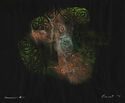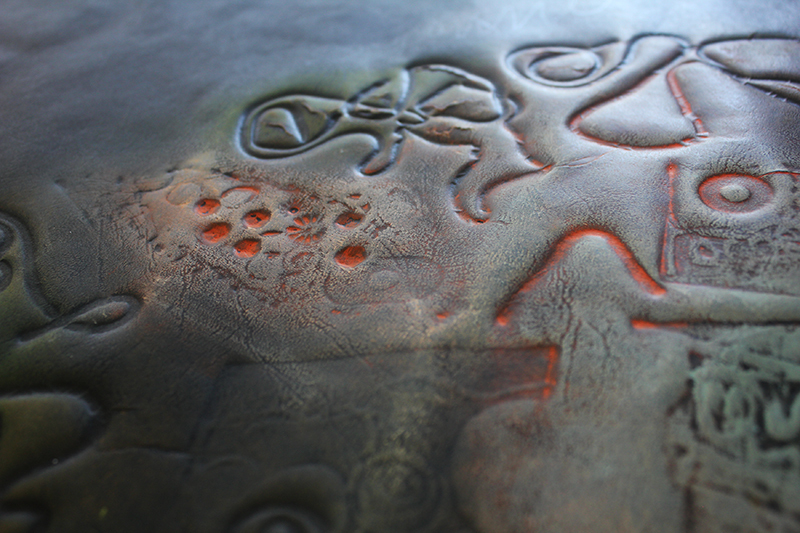
19th, 20th & 21st Century Fine Prints
707-546-7352 · fax 707-546-7924 · web: www.annexgalleries.com · email: artannex@aol.com
Cameograph #182 by Bertha Bonart



Cameograph #182
Bertha Bonart
Cameograph #182
Bertha Bonart
1904 - 1993 (biography)A deeply embossed, three dimensional cameograph (similar to a collagraph) on a slick, black wove paper that's been lightly inked in bright orange, green, and teal on the surface, with additional, heavily inked embossed spots throughout. Bertha Bonart was a German born, San Francisco Bay Area-based sculptor, painter, and printmaker, and at the time of this work's creation was likely living in Berkeley.
The Cameograph was a photographic and mechanical refinement developed in 1921 by an Englishman, Henry M. Edmunds, who worked out the notion by arranging three cameras in a graceful arc around the subject. He patented his discovery in 1921 and 1923. It was based on a 16th century device, the drawing frame, which employed a rectangular frame with wires creating a grid through which the artist viewed the subject. The Cameograph's feature was to photograph the subject illuminated by numerous vertical beams of light. Two photographs were taken, on each side of the subject (to be able to view any hidden line in a shadow to create the bas-relief image). Another machine takes the actual photograph and, by a mechanical method carves out bas-reliefs, full rounds, and masks in bronze, ivory, marble, and so forth.
The photographs could be enlarged to any size. The operator traced the lines on the photos through a viewing microscope controlling the milling of the cutter tool on the machine. It produced a relief of desired size in a media that could be easily cut, such as plaster, wood or copper. A few artists, like Bertha Bonert, devised a method to create original works of art.
A review of the process from around 1924 proclaimed “At Underwood & Underwood’s studios in the Bonwit Teller Building, a little gadget with the unlovely name of the Cameograph is aiding them to commercialize, for the first time in this country, sculpture by photography.”
It appears that Bonart, born Anne Bertha Rode, didn't begin seriously pursuing art until after fleeing Germany in 1937. She and her husband, Paul Bohnhardt, were members of the German underground known as the ISK (International Socialist Militant Association). The non-denominational organization, founded by philospher and mathematician Leonard Nelson, helped Jewish and other persecuted German citizens escape Berlin from 1932 to 1938. A memoir by her husband about their time in the German resistance: https://www.butwesaidno.com/home
Bertha and Paul were finally allowed to enter the U.S. in 1947 and received U.S. citizenship in 1952, at which point they changed the spelling of their name to 'Bonart.' Around this time is when Bertha was able to focus on art, first in Rochester, New York, and then in Berkeley, California, where they finally settled. She studied under Johnny Friedlaender, Hans Hoffman, Max Beckmann, and Yasuo Kuniyoshi.



